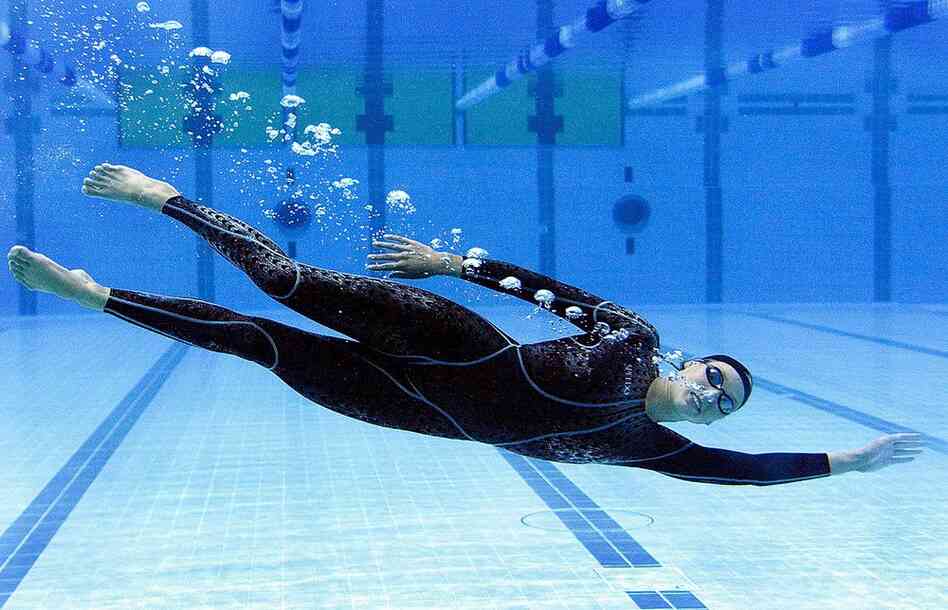Content Menu
● Introduction
● Historical Perspective
● The Shift Towards Long Swimsuits
● Technological Advancements
● The Speedo LZR Racer: A Game-Changer
● Benefits of Long Swimsuits:
● The Controversy
● Regulatory Response
● The Current State of Competitive Swimwear
● The Future of Swimwear Technology
● Conclusion
● Frequently Asked Questions
>> Q: Are long swimsuits still allowed in competitive swimming?
>> Q: How much difference can a tech suit make to a swimmer's performance?
>> Q: Why were full-body tech suits banned from competition?
>> Q: What materials are modern competitive swimsuits made from?
>> Q: How often do competitive swimmers replace their tech suits?
Introduction
The world of competitive swimming has seen dramatic changes over the years, not just in terms of athletic performance but also in the technology and design of swimwear. One of the most noticeable shifts has been the adoption of long swimsuits by elite swimmers. This article delves into the reasons behind this trend, exploring the history, technology, benefits, and controversies surrounding long swimsuits in competitive swimming.

Historical Perspective
To understand the current state of competitive swimwear, we need to look back at its evolution. In the early 20th century, swimsuits were primarily made of wool, which was heavy, absorbed water, and increased drag, significantly slowing swimmers down. As the sport progressed, so did the materials and designs of swimwear.
The video above provides a comprehensive look at the history of swimwear from the 18th century to modern times, showcasing the dramatic changes in both fashion and function.
The Shift Towards Long Swimsuits
The real revolution in competitive swimwear began in the 1990s. Companies like Speedo started developing drag-reducing fabrics, which led to swimmers opting for greater coverage. This marked the beginning of the long swimsuit era in competitive swimming.

Technological Advancements
The development of long swimsuits is deeply rooted in technological advancements. These suits are not just longer versions of traditional swimwear; they incorporate cutting-edge materials and designs to enhance performance.
1. Fabric Technology: Modern long swimsuits use materials that are water-repellent and reduce drag. These fabrics are often inspired by shark skin, mimicking its texture to improve water flow around the swimmer's body.
2. Compression: Long swimsuits provide compression to the swimmer's muscles, which can help reduce muscle vibration and fatigue. This compression also helps maintain proper body position in the water.
3. Reduced Drag: The full-body coverage of long swimsuits creates a smoother surface area, reducing the drag caused by body hair and skin irregularities.
4. Buoyancy: Some advanced swimsuits incorporate materials that trap air, providing a slight buoyancy effect that helps keep swimmers higher in the water, reducing drag further.
The Speedo LZR Racer: A Game-Changer
One of the most famous examples of long swimsuit technology was the Speedo LZR Racer, introduced in 2008. This suit was developed in collaboration with NASA and was a true game-changer in the sport.
The video above tells the story of the Speedo LZR Racer, which was so effective that it was eventually banned from competition.
Benefits of Long Swimsuits:
The advantages of wearing long swimsuits in competitive swimming are significant:
1. Improved Hydrodynamics: Long swimsuits create a smoother surface on the swimmer's body, reducing turbulence and allowing for more efficient movement through the water.
2. Muscle Support: The compression provided by these suits supports muscles, potentially reducing fatigue and improving endurance.
3. Psychological Boost: Wearing a high-tech suit can give swimmers a psychological edge, boosting their confidence and potentially improving performance.
4. Temperature Regulation: Full-body coverage can help maintain optimal body temperature, which is crucial for performance in longer events.
5. Reduced Drag: Studies have shown that tech suits can significantly reduce drag in the water. One study found that, on average, swim performance improved by 3.2% when swimmers wore a tech suit as opposed to a regular training suit.

The Controversy
Despite their benefits, long swimsuits have not been without controversy. The dramatic improvements in performance led to questions about fairness and the role of technology in sport.
1. "Technological Doping": Critics argued that the advanced suits provided an unfair advantage, likening it to a form of technological doping.
2. Accessibility: The high cost of these suits raised concerns about creating an uneven playing field between athletes who could afford them and those who couldn't.
3. Focus on Technology over Skill: There were fears that the emphasis on suit technology was overshadowing the importance of athletic skill and training.
4. Record-Breaking Spree: The period between 2008 and 2009 saw an unprecedented number of world records broken, leading to questions about the integrity of these achievements.
The video above features a discussion with Sonny Trigg, known as @TheSwimsuitGuy, about the history of swimsuits and the impact of the "super suit" era on swimming and coaching.
Regulatory Response
In response to the controversies, FINA (now World Aquatics), the international governing body for aquatic sports, implemented new regulations in 2010:
1. Material Restrictions: Suits were required to be made from textile materials, banning the use of polyurethane and other non-textile materials.
2. Coverage Limitations: For men, suits could only cover the area from the waist to the knee. For women, suits could not extend beyond the shoulders or below the knee.
3. Thickness Restrictions: The thickness of the suit material was limited to ensure it didn't provide additional buoyancy.
These regulations effectively ended the era of full-body tech suits in competitive swimming.
The Current State of Competitive Swimwear
Despite the restrictions, technology continues to play a crucial role in competitive swimwear design. Modern suits still incorporate advanced fabrics and construction techniques to provide benefits within the rules.
1. Compression Panels: Strategic placement of compression panels helps support key muscle groups.
2. Seam Reduction: Minimizing seams reduces drag and improves hydrodynamics.
3. Water-Repellent Treatments: Fabrics are treated to repel water, reducing drag and water absorption.
4. Customization: Some manufacturers offer customized suits tailored to individual swimmers' body shapes for optimal fit and performance.
The video above discusses how Olympic swimmers are using the latest swimsuit technology in their quest for gold medals.
The Future of Swimwear Technology
As we look to the future, it's clear that innovation in swimwear technology will continue, albeit within the constraints of current regulations. Some areas of potential development include:
1. Sustainable Materials: With growing environmental concerns, there's a push towards using eco-friendly, recycled materials in swimsuit construction.
2. Biomimicry: Further research into nature-inspired designs could lead to even more efficient hydrodynamic properties.
3. Smart Textiles: The integration of sensors and smart fabrics could provide real-time data on a swimmer's performance and physiological state.
4. 3D Printing: Advances in 3D printing technology could allow for highly customized suits tailored to individual body shapes and swimming styles.
Conclusion
The evolution of long swimsuits in competitive swimming reflects the ongoing interplay between technology, athleticism, and the spirit of fair competition. While the era of full-body tech suits may be over, the impact of these innovations continues to shape the sport. As swimmers push the boundaries of human performance, swimwear technology will undoubtedly continue to evolve, always seeking that perfect balance between innovation and fairness.
As we've seen, the answer to "Why do swimmers wear long swimsuits?" is multifaceted, involving aspects of physics, physiology, psychology, and the eternal human drive to improve and excel. The story of long swimsuits in competitive swimming is not just about fabric and design; it's a testament to human ingenuity and the relentless pursuit of athletic excellence.
Frequently Asked Questions
Q: Are long swimsuits still allowed in competitive swimming?
A: Full-body long swimsuits are no longer allowed in competitive swimming. Current regulations limit suits for men to cover from the waist to the knee, and for women from the shoulders to the knee.
Q: How much difference can a tech suit make to a swimmer's performance?
A: Studies have shown that tech suits can improve swim performance by an average of 3.2% compared to regular training suits. However, the actual impact can vary depending on the individual swimmer and the specific event.
Q: Why were full-body tech suits banned from competition?
A: Full-body tech suits were banned due to concerns about fairness. They were seen as providing an unfair advantage, potentially overshadowing athletic skill, and creating an uneven playing field due to their high cost.
Q: What materials are modern competitive swimsuits made from?
A: Modern competitive swimsuits are made from textile materials, often blends of nylon and spandex. These materials are chosen for their durability, elasticity, and water-repellent properties.
Q: How often do competitive swimmers replace their tech suits?
A: Competitive swimmers typically replace their tech suits frequently, often after just 10-15 wears. The compression and water-repellent properties of the suits can degrade with use, reducing their effectiveness.




































